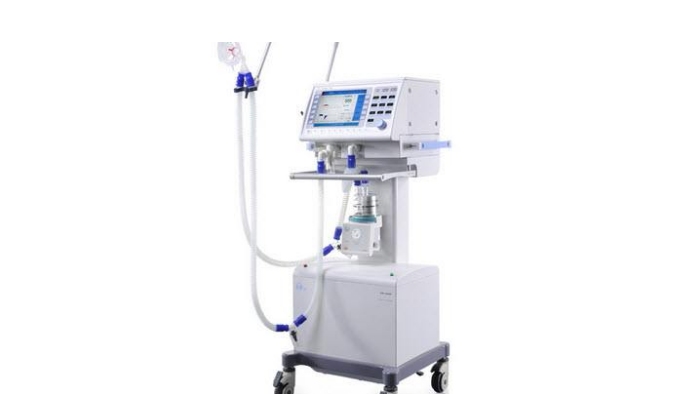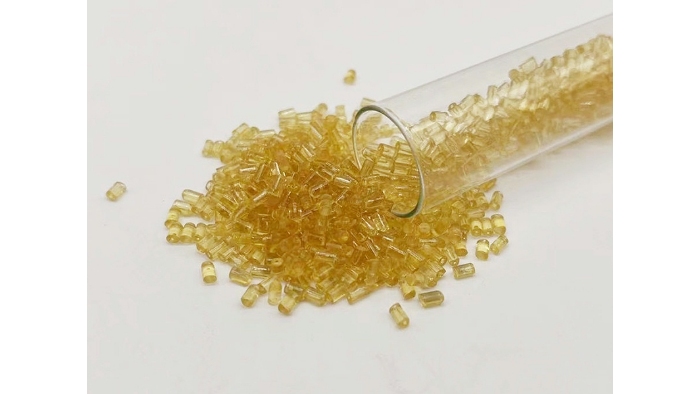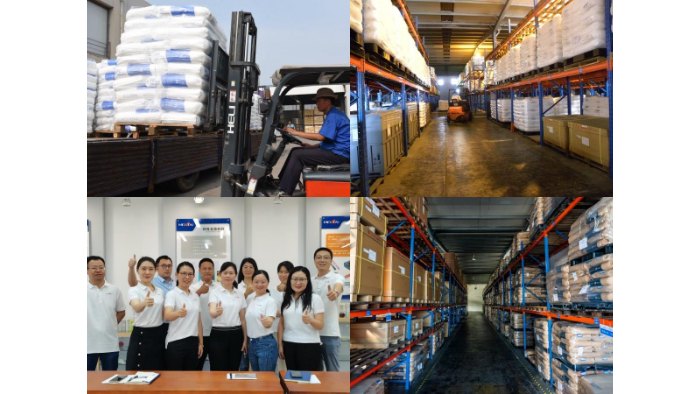In recent years, the global medical device industry has seen an average economic growth of about 4%, which is higher than the growth rate of the national economy in the same period. The United States, Europe and Japan together occupy a major market position in the global medical device market, of which the United States is the world's largest producer and consumer of medical devices, this paper focuses on the commonly used medical engineering plastics, which are composed of materials that are easy to process shape.

1. Acrylonitrile-butadiene-styrene (ABS)
Terpolymer made of SAN (styrene-acrylonitrile) and butadiene synthetic rubber. In terms of its structure, the main chain of ABS can be BS, AB,AS, while the corresponding branch chain can be AS, S, AB and other components.

ABS is in the continuous phase of the resin, dispersed in the rubber phase of the polymer, and therefore not simply a copolymer or mixture of the three monomers SAN (styrene-acrylonitrile) to give ABS hardness and surface finish, butadiene to give it toughness, the ratio of the three components can be adjusted as needed. Typically available in 4-inch-thick sheets and rods up to 6 inches in diameter, the plastic can be easily bonded and laminated to form thicker sheets and components. Because of its reasonable cost and ease of processing, it is a popular material for computer numerical control (CNC) manufacturing prototypes.ABS is commonly used for blister molding of large medical device housings, with fiberglass-filled ABS being used more often in recent years.
2. Acrylic Resin (PMMA)
Acrylics were actually one of the first medical device plastics and are still commonly used in the molding of interstitial restorations. Acrylic is basically polymethylmethacrylate (PMMA).
Acrylics are strong, clear, workable and bondable. A common method of bonding acrylics is solvent bonding with chloromethane. Acrylics are available in an almost unlimited variety of rod, sheet and plate shapes, as well as a variety of colors. Acrylics are particularly well suited for light tubing and optical applications.
Acrylics for signs and displays can be used for benchmarking and prototyping; however, care must be taken to identify medical-grade versions before using them in any clinical trials. Commercial grade acrylics may contain UV resistance, flame retardants, impact modifiers and other chemicals that make them unsuitable for clinical use.
3. Polycarbonate (PC)
Polycarbonate (PC) is the toughest of the transparent plastics and is very useful for prototype medical devices, especially if UV-cured bonding is to be used.PC is available in several forms, rod, plate and sheet, and it is easy to combine.
Although more than a dozen performance characteristics of PC can be used individually or in combination, seven are most often relied upon.PC has high impact strength, clear water transparency, good creep resistance, a wide operating temperature range, dimensional stability, abrasion resistance, hardness, and rigidity, albeit ductile.PC is susceptible to discoloration through radiation sterilization, but radiation stabilized grades are available.
4. Polypropylene (PP)
PP is a lightweight, inexpensive polyolefin plastic with a low melting point, making it ideal for thermoforming and food packaging.PP is flammable, so look for a flame-retardant (FR) rating if you need fire resistance.PP is bend-resistant, and is commonly referred to as "bendy glue," so use PP for applications that require bending.
5.Nylon (Polyamide, PA)
Nylon is available in 6/6 and 6/12 formulations. Nylon is tough and heat resistant. The identifiers 6/6 and 6/12 refer to the number of carbon atoms in the polymer chain, and 6/12 is a longer chain nylon with higher heat resistance. Nylon material has the mechanical strength and skin-friendly feel that ordinary materials do not have, and medical equipment foot drop braces, rehabilitation wheelchairs, medical care beds usually need a certain amount of weight-bearing capacity of the parts, so usually choose PA66 + 15% GF.
6.Polyoxymethylene (POM)
Originally developed in the early 1950s as a tough, heat-resistant alternative to non-ferrous metals, POM is a tough plastic with a low coefficient of friction and high strength. It is commonly used in machined medical device prototypes and closed fixtures. It is highly machinable, making it ideally suited for machined device prototypes that require strength, chemical resistance and FDA-compliant materials.
7.Polyetherimide (PEI)

Ultem 1000 is a thermoplastic polyetherimide high heat polymer designed by SABIC for injection molding processes. Through the development of new extrusion technologies, manufacturers such as A. L. Hyde, Gehr, and Ensinger produce Ultem 1000 in a variety of models and sizes.Ultem 1000 combines superior processability with cost-saving advantages over PES, PEEK, and Kapton for high-heat applications (continuous use up to 340°F).Ultem is autoclave-resistant. Sterilization.
8. Polyetheretherketone (PEEK)
Polyetheretherketone (PEEK), a trademark of Victrex plc (U.K.), is a crystalline, high-temperature thermoplastic with excellent heat and chemical resistance, as well as excellent abrasion and dynamic fatigue resistance. It is recommended for use in electrical components that require high continuous operating temperatures (480°F) and very low smoke and toxic fume emissions from exposure to flame.
PEEK meets Underwriters Laboratories (UL) 94 V-0 requirements, 0.080 in. The product is extremely resistant to gamma radiation, even exceeding the resistance of polystyrene. The only common solvent that can attack PEEK is concentrated sulfuric acid.PEEK's resistance to hydrolysis is excellent, and it can be operated in vapors up to 500°F.
9.Polytetrafluoroethylene (PTFE)
TFE or PTFE (polytetrafluoroethylene), commonly referred to as Teflon, is one of the three fluorocarbon resins in the fluorocarbon group and is composed entirely of fluorine and carbon. The other resins in this group, also known as Teflon, are perfluoroalkoxyfluorocarbons (PFA) and FEP.
The forces combining fluorine and carbon together provide one of the strongest known chemical bonds in tightly symmetrically arranged atoms. This bond strength coupled with the chain configuration results in a relatively dense, chemically inert, thermally stable polymer.
TFE resists attack by heat and virtually all chemicals. It is insoluble in all organic matter except a few exotic species. It has very good electrical properties. Although it has high impact strength, it has low abrasion resistance, tensile strength and creep resistance compared to other engineering thermoplastics.
TFE has the lowest dielectric constant and lowest dissipation factor of any solid material. Due to its strong chemical linkages, TFE is virtually unattractive to different molecules. This results in coefficients of friction as low as 0.05. Although PTFE has a low coefficient of friction, it is not suitable for load-bearing orthopaedic applications due to its low creep resistance and low abrasion properties, a problem identified by Sir John Charnley in his pioneering work on total hip arthroplasty in the late 1950s.
10.Polysulfone
Originally developed by BP Amoco, polysulfone is currently manufactured by Solvay under the trade name Udel and polyphenylsulfone is sold under the trade name Radel.
Polysulfone is a tough, rigid, high-strength, clear (light amber) thermoplastic that maintains its properties over a wide temperature range from -150°F to 300°F. It is also available in a wide range of colors, including black, red, and blue. Designed for use in FDA-approved equipment, it also passes all tests for USP Class VI (biological). It meets National Sanitation Foundation drinking water standards up to 180° F. Polysulfone has very high dimensional stability, with linear dimensional changes of typically 1% or less to one-tenth of one percent after exposure to boiling water or air at 300° F. Polysulfone is also resistant to inorganic acids, alkalis, and alkalis. Polysulfone has high resistance to inorganic acids, bases, and salt solutions; good resistance to detergents and hydrocarbon oils even at elevated temperatures at moderate stress levels Polysulfone is not resistant to polar organic solvents such as ketones, chlorinated hydrocarbons, and aromatic hydrocarbons.
Radel is used in instrument trays requiring high heat resistance and high impact strength for hospital autoclave tray applications. Polysulfone engineering resins combine high strength with long-term resistance to repeated steam sterilization. These polymers have been shown to be an alternative to stainless steel and glass. Medical grade polysulfone is biologically inert, has a uniquely long life during sterilization, can be clear or opaque, and is resistant to most common hospital chemicals.
If you have more questions about medical grade engineering plastics, welcome to QINGDAO PRIME TRADE CO.,LTD.
QINGDAO PRIME TRADE CO.,LTD is a company with more than 21 years of experience specializing in the agency of international brands of engineering plastics pellets, the main agent: CHIMEI ABS, HANWHA TOTALEnergies PP, SABIC PPO, PC Specialty materials outside. We also have our own modification processing plant Qingdao Meitai Plastic Co., Ltd. to provide you with professional technical team to provide fast and professional services to meet the needs of customers at different levels.

0086 13605427277
0086 0532 68051919
0086 157 2520 9359